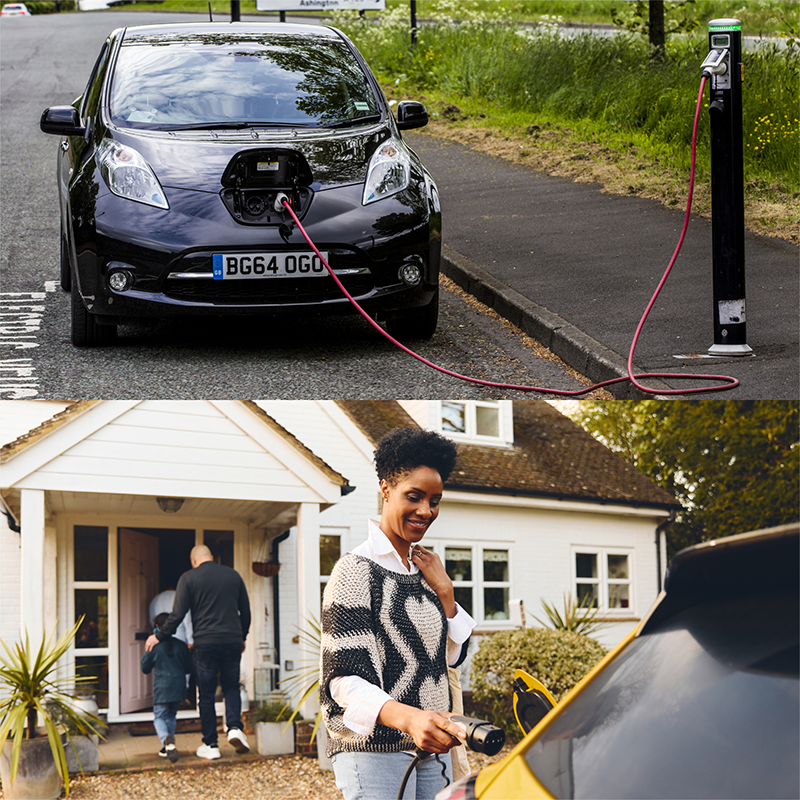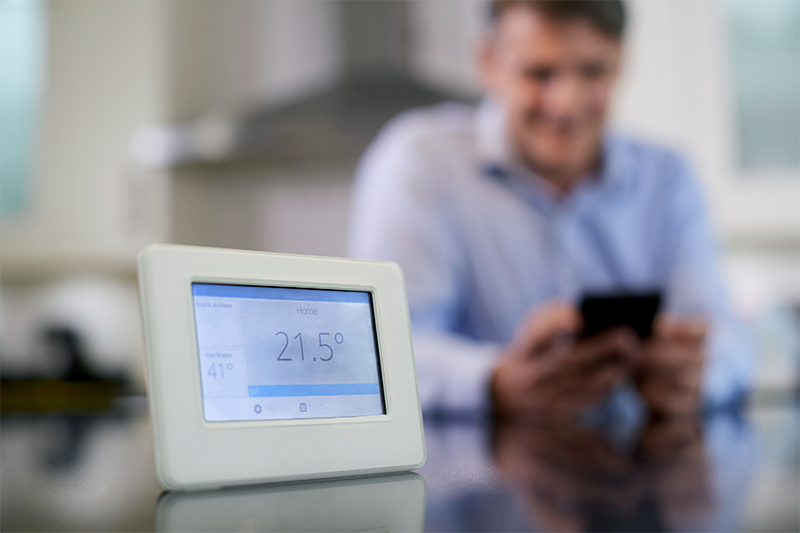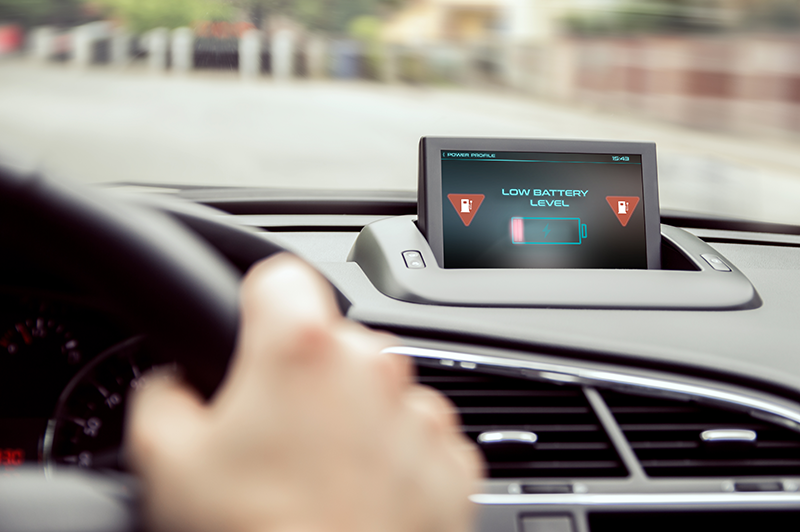
Public Charging Stations Vs Home EV Charging – Which is Better?
29 February 2024
Smart Meters – what are they and how can you benefit
1 March 2024Say goodbye to EV range anxiety and hello to a long battery life
“…It’s a dark and drizzly night. You’re driving back from a work conference, exhausted, weary and still hours from home. Taking the back roads in the hopes they’ll get you home sooner, the unimaginable happens: your EV’s battery runs out of power. Put, put, stop…”
Ok. So we may have a way to go before we bump John Grisham’s bestsellers off the bookshelves! But the above lines still sum up many potential electric car owners’ worst nightmare.
Range anxiety, the fear that an electric vehicle (EV) can only travel a limited distance on a single charge before the battery empties, is real.
In fact, one survey carried out by car maker, Volvo, claimed that 58 per cent of the report’s participants worried their EV battery would power out before they were able to recharge it.
Another study noted that 46 per cent of Britain’s potential EV owners feared they wouldn’t be able to find an EV charger in time.
But how far do these likely drivers think they’ll be driving?
Regardless of what any of us might assume, the real answer to that question is that it’s not far at all.
Statistics from the UK government show that approximately 99 per cent of car journeys in England are under 100 miles.
Add to that the information from Octopus, one of the country’s primary renewable energy suppliers, that today’s electric cars typically take in a 200-300 mile range on a single charge (or a 400+ mile range if you’re sporting a more expensive, souped-up EV), and there’s little to be concerned about.
Popular EV models by range
| Model | Tesla Model S | Polestar 3 | Tesla Model 3 | Volkswagen ID.4 | Kia e-Niro | Mini Electric |
| Range | 405 miles | 379 miles | 374 miles | 310 miles | 282 miles | 145 miles |
*2024 Figures from EV Magazine & CAR Magazine
Worries about finding a public charger before your car battery runs flat are not so easily put to bed, however. The UK is significantly behind its target to install 300,000 public EV chargers by 2030, with 53,677 charging devices currently installed across the country.
Folk who’ve invested in EV home charging can fret less, of course. Plugging in and powering up overnight (when rates are at their lowest), means there’s no need to think about charging your car when you’re out and about.
Do EV batteries suffer wear and tear?
Even if you are keeping your car fully charged at all times, you may be concerned about its battery’s ongoing wear and tear.
Luckily, that’s not a major thing.
The truth is the average electric car battery has a lifespan of 10 to 20 years, and most have a guarantee of eight years or 100,000 miles.
Does weather affect your battery?
Another regularly voiced concern is that both high and low weather temperatures can play havoc with your EV battery’s health and end up affecting its range.
The good news is, that normal bad weather, which, let’s face it, is just “normal weather” in some parts of the country, won’t affect your EV battery.
The slightly less good news is that the distance you can travel on a single charge may take a tumble in extreme weather conditions (though the emphasis here is on “extreme”). Both sweltering heat and severe cold can affect the chemical processes in the battery and lower the total charge.
Britain is generally safe from extreme weather, but there’s no harm in taking precautions during the different seasons. In winter, either park your EV in an enclosed garage or under a car cover. While during a long, hot summer simply park in the shade.
In addition, pull back on frequent fast charging as this can accelerate the battery’s decline over time. Charging your EV at home during lower peak times is always the best option. This will reduce overall stress on the battery—and, of course, reduce stress on your finances too!
Steps to take to put EV range anxiety to rest
Of course, taking care of your EV’s battery and all other aspects of your vehicle’s health is something any responsible electric car owner should be doing anyway.
But if it’s still not assuaging your EV range anxiety, here are a few further steps you can take to put your worries at rest—especially if you’re planning a particularly long journey.
Step #1: Be prepared
Nothing like starting with the obvious, right? But if you know you’re going to be driving somewhere far soon then prepare for it. For starters, fit in plans to fully charge your EV before you head off. Home charging means you can plug in overnight and rest assured that the car will be totally topped up by the following morning.
If you plan on powering up at a public charging station, check where your nearest on-street smart meter is located and schedule charging time when energy prices are at their least expensive.
Also, don’t forget to enquire about available EV charging stations at your final destination so that you can fully charge your vehicle again if necessary before you set out on the return trip.
Step #2: Download an app
To ensure perfect peace of mind on a long journey, download an app such as Zap-Map, which can help you locate thousands of charging stations on your route.
If you’re using Powerverse’s advanced data-driven, AI-powered app, you can keep an eye on your EV’s battery level. You can note the percentage of battery used and what you’ve got left for your return journey.
Step #3: Drive efficiently
Drive at a consistent speed, and avoid sudden stops and starts. Yep, just as with a standard petrol engine, the less speedy and more stable your driving, the better you’ll be able to save on battery life.
Step #4: Use regenerative braking
Many hybrid models and EVs come with a feature called regenerative braking. This is a method of braking that enables the kinetic energy caused when the vehicle applies its brakes to be captured and used to charge the battery. It’s most effective at lower speeds, such as when stopping and starting at city traffic lights or zebra crossings, and studies have shown that, over time, it can extend your driving range by 16-70 per cent.
Step #5: Turn off features to turn up range
While we know that nothing says comfy like a warm posterior (sorry, T.M.I?), turning off your heated seats, air conditioning or any other features that tend to gobble up energy, can help conserve battery power.
Of course, that doesn’t mean quashing all comfort. But it’s important to strike a balance and only use these functions in your EV when absolutely necessary while on a long drive.
Step #6: Install a home charging station
Finally, the easiest way to keep your battery in tip-top shape and knock EV range anxiety on the head is never to worry about charging your electric car. Installing an EV home charger allows you to charge your EV whenever you want and at a time that suits you.
It’s also much more cost-effective. Having a home car charger installed allows you to take advantage of off-peak rates and the competitive tariffs most energy suppliers offer. This saves you from having to splash the cash on the more expensive public chargepoints.
But in addition to that, the ability to always maintain a full battery instead of regularly topping up out-of-home will be kinder on the battery and help you extend its lifespan. As such, there’ll be less need for repairs or early replacement too.
Charging at home also improves overall efficiency. Think about it. An EV home charging point will extend driving range, reduce cost, consumption and carbon outlay, and finally help you say goodbye for good to anxiety on long journeys.
Find out more about installing a smart EV home charger from Powerverse. As one of the most competitive EV charging systems on the market, our price includes standard installation.
About Powerverse
We’re industry experts in home energy management. Our easy-to-use app is built for your future electric home. It will effortlessly sync your solar, battery, heat pump, EV charger and more, helping you cut costs and your carbon footprint on your way to becoming energy-independent. Curious to know more? Talk to one of our experts.

